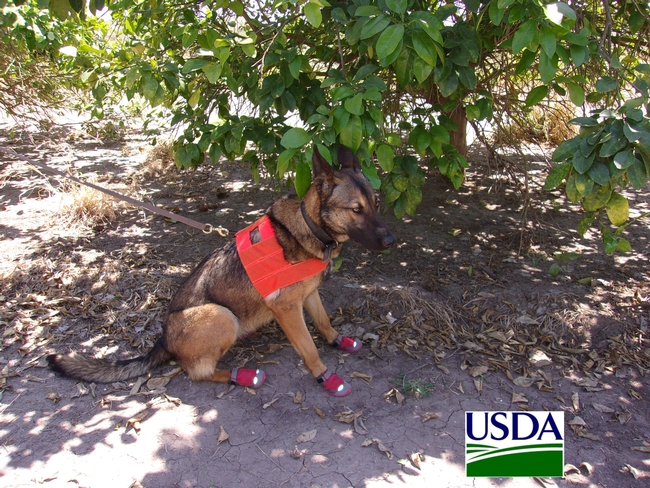Canines have a highly sensitive scent detection capability that is significantly better (parts per trillion) than most laboratory instruments and they can be trained to “alert” (either sit or lay) when they detect specific ‘smells' (known as scent signatures). Most people are familiar with their ability to detect bombs, drugs, and plant material at airports. However, canines are also used to detect agricultural pests and diseases.
For the past 5 years in Florida, researchers have been training and evaluating the efficacy of canines for detecting “Candidatus Liberibacter asiaticus” (CLas), the bacterium that causes huanglongbing (HLB) and CLas detection efforts with canines have recently begun in California.
How can these dogs help in the fight against huanglongbing (HLB)? Visit the Research Snapshot page to learn more: https://ucanr.edu/sites/scienceforcitrushealth/Research_Snapshots/Gottwald/
About Research Snapshots
 We have developed short, descriptions of research projects that aim to help in the fight against HLB. These projects include traditional breeding and genetic engineering to create resistant citrus varieties, psyllid modification, using other organisms to deliver HLB-resistance genes, and early detection of the bacterium in trees.
We have developed short, descriptions of research projects that aim to help in the fight against HLB. These projects include traditional breeding and genetic engineering to create resistant citrus varieties, psyllid modification, using other organisms to deliver HLB-resistance genes, and early detection of the bacterium in trees.
Attached Files:
Attached Images:
